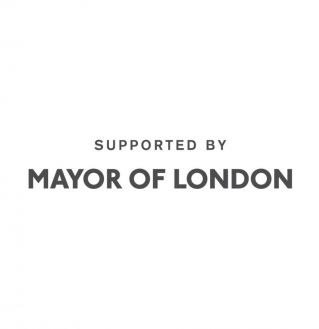New London Architecture
Quality of place brings value – in London and New York
Tuesday 05 November 2019

Developers in both London and New York are beginning to connect quality of place with value. But they must work harder to communicate that message if they are to rebuild trust with local communities and dispel the notion that all developers are only in it for the money.
That was one of the key take-aways to emerge from the latest NYLON live hook-up between the UK and US last week, held at the offices of KPF in the former and Center for Architecture in the latter.
Beyond money – how development is delivering social value in London and New York kicked off in New York, with Colombia University’s Holliday Associate Professor of real Estate Patrice Derrington asserting that value in urban development has a financial, shelter and social dimension. But the concept of just making money for shareholders is diminishing. End users are now ‘starting to become much more interested in other aspects’, said Derrington, willing to pay for positive social impact, while financial intermediaries such as owners and lenders also now have social dimensions and sustainability concerns on their checklists, and the urban context has political agendas and NIMBYism to deal with. But developers should define and ‘sell’ the social benefits of their projects more clearly, and do more in the way of ‘meaningful community engagement’, Derrington suggested.
Two Trees managing director David Lambino showed how the developer’s approach to development is always ‘ambitious’ and rejecting of ‘cookie-cutter’ projects, but that there are ‘gestures and moods that can deliver public goods that really add to the bottom line’. An example is the developer’s Domino Sugar Plan, a reworking of an old sugar refinery site near the Williamsburg Bridge, which it inherited a masterplan for but succeeded in refining it to give up ground space and create Domino Park, a 5 acre waterfront park which has attracted 2 million visitors in 16 months. The developer is spending around $2-3 million on maintenance of the park every year, but the most meaningful result, said Lambino, was in going down to the area on any day and seeing ‘an enormous amount of people in the park.’
Over in London, a sense of place is an important ingredient of successful urban development, said Matthew Carmona, professor of planning and urban design at The Bartlett School of Planning at UCL. The quality of places impact on value, he said, and this was empirical, rather than just a ‘woolly assertion’.
Carmona showed how research into 300 empirical studies had allowed his department to create a Wiki ‘that takes a different view of value beyond that view which is purely economic’. Better environments lead to things like better mental health, lower rates of crime, property uplift and reduced energy use, amongst a series of proven elements. This says something of the sorts of principles which should be taken on board, expressed as a ladder. These include not building ‘sprawling, disconnected places, filled with hard landscape’ and dominated by single use. Rather, schemes should have high levels of greening, a mix of uses, low levels of traffic, be ‘compact and coherent’ and have ‘bikeability’ and public transport accessibility.’
‘We’ve known about these for a long time’, said Carmona. ‘But the point is the empirical evidence is there that we should confidently require these in new developments. And the evidence is definitive’. None of this is a luxury, Carmona added. ‘These are the basic necessities of life and should be the expectation of all. Read the report, climb the ladder’.
Finally, Thomasin Renshaw, director of development, South Molton Triangle, Grosvenor, stressed the importance of rebuilding trust with communities, raising the quality of debate and reversing the perception that developers are only in it to make money. Grosvenor has created an evidence base on the issue having canvassed solicitors, councillors and the public, revealing statistics such as that only 2 per cent of the public trust developers when it comes to large scale development. ‘We think it’s important we’re able to articulate that what we’re doing that isn’t purely financially driven’, she said, pointing to things like footfall, biodiversity and the diversity of people coming onto its estate.
During discussion, Carmona said that there certainly developers out there that only care about financial return, as revealed by its housing audit, but happily some are bucking the trend. A long term interest in the place is often the difference, he said, as with the Great Estates. ‘What they leave behind is going to be there for a long time’, he said. ‘It comes down to our public sector demanding that the quality is there’. Derrington agreed, suggesting that New York has a similar issue, even if density and height are similar bugbears to local communities. ‘What really messes things up is the short-term speculation’, she said. ‘This is what is causing us problems’.
Related

Video
NYLON Tower Retrofit: Approaches to reuse in London and New York
As part of NLA’s Adaptive Reuse publication and programme, this NYLON session brings London and New York together to sho...
Watch video
Video
Tall buildings in the urban fabric
How do tall buildings integrate into the urban fabric and historical heritage? Watch back as we discuss city-wide strate...
Watch videoStay in touch
Upgrade your plan
Choose the right membership for your business
Billing type:
Small Business Membership
£90.00
/month
£995.00
/year

For businesses with 1-20 employees.
Medium Business Membership
£330.00
/month
£3,850.00
/year

For businesses with 21-100 employees.
View options for
Personal membership








